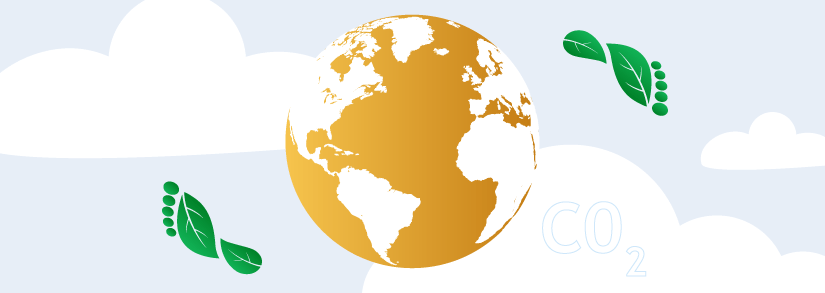Reducing the carbon footprint at the domestic level

The ecological footprint is one of the most important sustainability indicators. Basically, it aims to measure the impact of our daily lives on our planet and our immediate surroundings. But what are you doing? What factors will affect it?
Sustainable development and sustainability indicators
Sustainability is the balance between diversity and productivity over time. Using this definition as a reference, sustainable development is a way to meet current needs without harming future generations and their potential needs.
Currently, there are three types of indicators to measure sustainability: drive indicators (measure the effects of different actions -deforestation, CO2 emissions, etc.- impact on the environment), state indicators (measure the objective condition of the environment -vegetation) by square meters, degree of desertification, crop area, etc.) and response indicators (evaluate the measures taken to reduce the environmental impact of our actions -percentage of protected areas, area of natural reserves, etc.).
The ecological footprint is in the first category, meaning it is an indicator that impacts sustainability.
How is the ecological footprint measured?
The ecological footprint has different variables, which can be evaluated quantitatively and qualitatively to assess problems, determine solutions, and control/monitor them.
Generally speaking, the ecological footprint is defined as the total production area needed to generate the resources consumed by citizens and absorb the waste generated in a year. The measurement also includes the carbon footprint (greenhouse gas emissions), the water footprint, and the impact on agriculture, livestock, forests, and infrastructure.
Tips to reduce our ecological footprint in our daily lives
Using public transportation, buying local food, or reducing water consumption at home can help us achieve a more sustainable world and reduce our ecological footprint, as described below:
Use clean transportation
Reducing the use of cars and motorcycles is very important for reducing carbon dioxide emissions. Using long-distance public transportation can not only lower ambient temperatures and reduce harmful gases emitted into the atmosphere, but also reduce traffic congestion and infrastructure losses. At the same time, bicycles allow us to exercise and stay fit in an organized manner. Get around the city.
Adopt more efficient habits at home
One way to improve your home’s efficiency, reduce your ecological footprint, and save on energy costs is to improve the insulation of your walls, ceilings, floors, or windows. Heating, air conditioning, and household appliances consume a lot of energy and generate greenhouse gases, so we recommend purchasing the most energy-efficient products (A, A+, A++, or higher) that emit the least amount of greenhouse gases. You should also develop a habit, such as using energy-saving light bulbs or avoiding standby mode on household electronics (TVs, computers, etc.).
Reduce your water consumption
The water footprint or water consumption is also related to the ecological footprint. As you know, water is a precious commodity and the basis of life. In recent years, in countries like ours, water reserves have been considerably reduced. Therefore, it is very important to raise awareness about saving water. Taking showers instead of baths, turning off the tap when not in use, watering plants with kitchen water, using an accelerator, or checking the water tank and faucet for leaks are simple measures that help us control water consumption. Constant-temperature appliances with automatic flow control functions or smart features to reduce consumption are examples of devices designed to improve the efficiency of hot water use.
Buy local products
Imported and packaged products have a huge impact on the environment because they emit large amounts of greenhouse gases during production, processing, and transportation. At the same time, consuming “zero-mile” products can reduce transportation costs and improve the local economy. Reducing meat consumption (the land we use to produce a kilogram of meat is much larger than the fertile land and water needed to produce a kilogram of vegetables) and buying products in bulk are other habits that help reduce our ecological footprint.
Reduce your waste
Sometimes, understanding our own consumption is the simplest way to become aware of the importance of reducing and recycling. By planning ahead, recycling, or donating, we can extend the useful life of many items. Avoid consuming plastic bottles, use cloth bags, don’t use disposable tableware, sort waste according to the container it should be stored in, don’t pour oil down the sink, or buy packaging. Product recycling techniques and reducing the ecological footprint should be respected when purchasing packaging.



